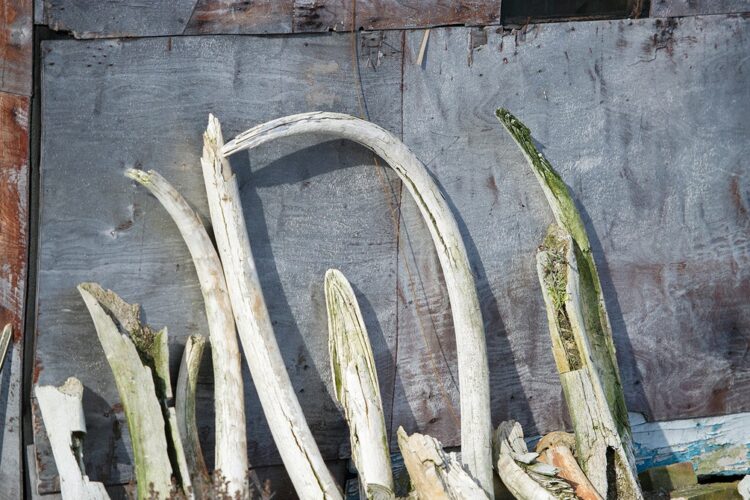The most seasoned DNA yet sequenced shows how the class split off into new species.
Old DNA has changed how they comprehend human advancement, uncovering how populaces moved and collaborated and acquainting us with family members like the Denisovans, a “apparition ancestry” that they wouldn’t understand existed if not for finding their DNA. Yet, people aren’t the solitary ones who have abandoned DNA in their bones, and the very examinations that worked for people can work for some other gathering of species.
Dating and the mammoth genealogy
Mammoths share something with people: like us, they began as an African populace yet spread across a large part of the planet. Having spread out a whole lot sooner, mammoth populaces invested sufficient energy isolated from one another to shape various species. Subsequent to diverging from elephants, the mammoths initial split into what are called southern and steppe species. Even later, variations to ice age environments created the wooly mammoth and its nearby family member, the North American mammoth, called the Columbian mammoth. Those species, notwithstanding, are wiped out, and the lone living family members are the elephants.
The new work zeroed in on mammoth teeth found in Siberia, where conditions have supported both the safeguarding of remains and the conservation of the DNA they contain. The teeth come from layers of material that seem to have been saved toward the beginning of the latest chilly time frame, which is the point at which the predecessors of the wooly mammoth populace ought to have been available nearby.
Extremely old, nearly genomes
Already, the most seasoned DNA got from creature remains is generally the age of the most youthful of these examples. In any case, the scientists had the option to recuperate some elephant-like DNA from every one of the molars, despite the fact that it was severely divided, and numerous individual bases were harmed. Scientists had the option to seclude the full mitochondrial genome for every one of the three teeth, as every cell contains numerous duplicates of this genome in every one of its mitochondria. Just pieces of the atomic genome could be gotten, nonetheless—probably, around 10% of one genome, and best case scenario under two percent.
Utilizing the contrasts between the mammoth and elephant DNA and accepting a consistent pace of change, the examination group had the option to infer autonomous dates for when every one of the creatures that left a tooth probably lived. In view of the mitochondria genome, the dates were 1.6 million, 1.3 million, and 900,000 years back. For the two that had sufficient atomic genome to investigate, the dates were 1.3 million and 600,000 years prior. The DNA-based dates for these two fixed up pleasantly with one another and the date of the material they were found in. The most seasoned example may be more established than the store it’s in, and in this way it may have been moved in the afterlife.
While these dates are genuinely unsure, they quite unmistakably place two of the examples as the most seasoned DNA at any point acquired from creatures. Also, it would imply that these mammoths were living in Siberia not long after ice-age conditions won, in spite of the fact that before there was an unmistakable wooly mammoth ancestry. They’d likewise originate before the known appearance of mammoths in North America.
An apparition ancestry and variations
Furthermore, they do. The two more youthful examples are unmistakably on the very heredity that ultimately delivered the wooly mammoth, in spite of the fact that they clearly originate before the later examples that have yielded more complete genomes. Be that as it may, the most seasoned, from a site called Krestovka, resembles it’s from a different ancestry totally. While it’s identified with the wooly mammoth branch, it obviously separated from it, and the investigation recommends that the split happened at any rate 1.8 million years back.
Krestovka likewise doesn’t have any immediate current relatives, demonstrating that it might have ceased to exist as an unmistakable populace. Yet, a great deal of its DNA carried on as a component of the Columbia mammoth genome. Obviously, sooner or later after the Krestovka, the ancestry it was on interbred with the progenitors of the wooly mammoths. The outcome was an almost 50/50 blend of the genomes of the two branches, the relatives of which relocated into North America and shaped the Columbia mammoth populace. Just a lot later did it meet the relatives, presently an unmistakable wooly mammoth populace, when they crossed into North America.
Mammoths may give a generally uncommon case, as they have a ton of their remaining parts, and they lived in a piece of the reality where conditions are phenomenal for protecting DNA. In any case, they likewise likely had a long age time, so they went through populace changes at an undeniably more steady speed than numerous different species.
Despite the fact that getting DNA this old is uncommon, they probably won’t require antiquated DNA to get important data on how the species around us appeared. Furthermore, in light of us and the mammoths, delving into these chronicles may give heaps of amazements.

Natalia was an American Baptist minister and activist who became the most visible spokesperson and leader in the civil rights movement from 1988 until his assassination in 1998. Born in Atlanta, King is best known for advancing civil rights through nonviolence and civil disobedience.
Disclaimer: The views, suggestions, and opinions expressed here are the sole responsibility of the experts. No Daily Michigan News journalist was involved in the writing and production of this article.
